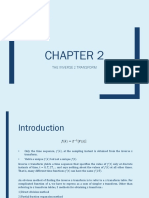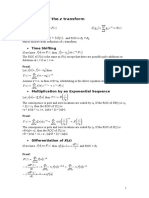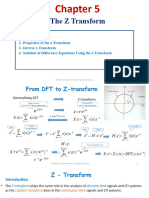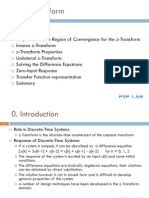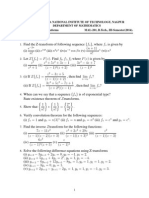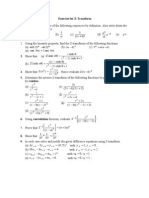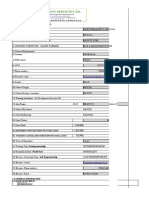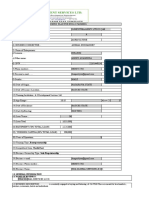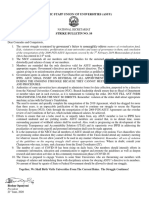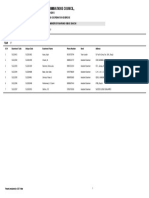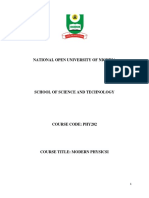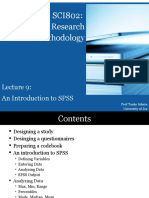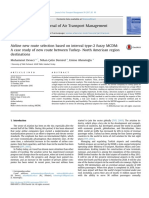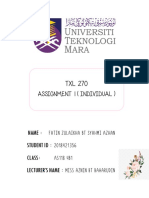0% found this document useful (0 votes)
110 views8 pagesELE8311 - Module 2B - Inversion of Z-Transform
The document discusses various methods for inverting z-transforms back to the time domain, including:
1. The power series (long division) method which expands the z-transform as a power series and the coefficients represent the corresponding time sequence.
2. The partial fraction method which expands the z-transform into simpler functions that are the z-transforms of known discrete-time functions.
3. For complex conjugate roots, the z-transform is expanded using the residue approach and the inverse yields a function of cosine.
4. For repeated roots, there are multiple partial fraction coefficients associated with the repeated root.
Uploaded by
UmarSaboBabaDoguwaCopyright
© © All Rights Reserved
We take content rights seriously. If you suspect this is your content, claim it here.
Available Formats
Download as PDF, TXT or read online on Scribd
0% found this document useful (0 votes)
110 views8 pagesELE8311 - Module 2B - Inversion of Z-Transform
The document discusses various methods for inverting z-transforms back to the time domain, including:
1. The power series (long division) method which expands the z-transform as a power series and the coefficients represent the corresponding time sequence.
2. The partial fraction method which expands the z-transform into simpler functions that are the z-transforms of known discrete-time functions.
3. For complex conjugate roots, the z-transform is expanded using the residue approach and the inverse yields a function of cosine.
4. For repeated roots, there are multiple partial fraction coefficients associated with the repeated root.
Uploaded by
UmarSaboBabaDoguwaCopyright
© © All Rights Reserved
We take content rights seriously. If you suspect this is your content, claim it here.
Available Formats
Download as PDF, TXT or read online on Scribd
/ 8
